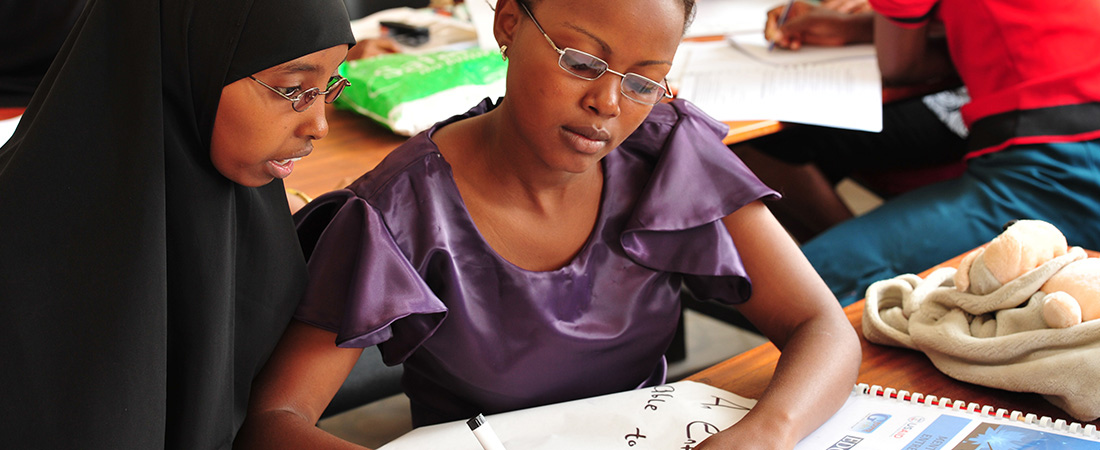The Resilience of Youth

Youth taking part in in EDC programs in Kenya showed high levels of resilience.
In Honduras, acts of extreme violence and retribution have helped MS-13 earn its reputation as one of the country’s most notorious street gangs. In North Eastern Kenya, the militant group Al Shabaab uses terror to advance its fundamentalist philosophies, keeping an entire region on edge. Both are fed by a steady supply of young people who, for lack of any better alternatives, join their ranks.
But for every young person who joins MS-13 and Al Shabaab, there are many others who do not. EDC’s Lainie Reisman wanted to understand why.
New research by Reisman has identified some of the factors that help young people avoid the pull of violent, extremist groups in even the most conflict-affected countries. Reisman and EDC co-author Gustavo Payan recently published their findings in the report MS-13 to Al Shabaab: Comparing Youth Violence and Resilience in Honduras and North East Kenya.
The report analyzes survey data from 200 participants in USAID-funded, EDC-implemented youth programs in North Eastern Kenya and Honduras. Reisman used the Child and Youth Resilience Measure (a tool developed and tested by the Resilience Research Center) to measure the youths’ resilience—loosely defined as their ability to find resources that sustain their well-being given the contexts in which they lived.
Participants were asked to rate their level of agreement with 28 different statements about their families, communities, and violence. Statements covered such themes as “I feel safe and comfortable in my home” and “Spiritual beliefs are a source of strength for me.” Focus groups were also conducted with the participants.
Reisman found that youth enrolled in the programs exhibited particularly high levels of resilience. She also found that there were significant similarities in levels of resilience between youth from Honduras and youth from Kenya.
These results surprised Reisman—and gave her some important information about why young people choose a peaceful path.
“We would have expected that youth living in some of the most difficult and violence-ridden communities in the world would have been much more pessimistic about their surroundings, support, and families,” says Reisman. “But this report tells us that the youth who choose these development programs are not jaded or lost and are primed to take advantage of any opportunities they have.”
Based on EDC’s experience working with these projects and on the lessons learned, the report recommends that organizations designing programs for youth do the following:
- Make the most of youth optimism
- Engage with religious leaders and institutions
- Emphasize the role of parents and caregivers
- Build on community cohesion and pride
- Promote peace, reconciliation, interfaith, and interfaith programs
Reisman believes that her findings are also applicable to developed countries with a high level of violence—such as the United States.
“The importance of making the most of youth optimism, community cohesion, and pride is all cross-boundary,” she says.